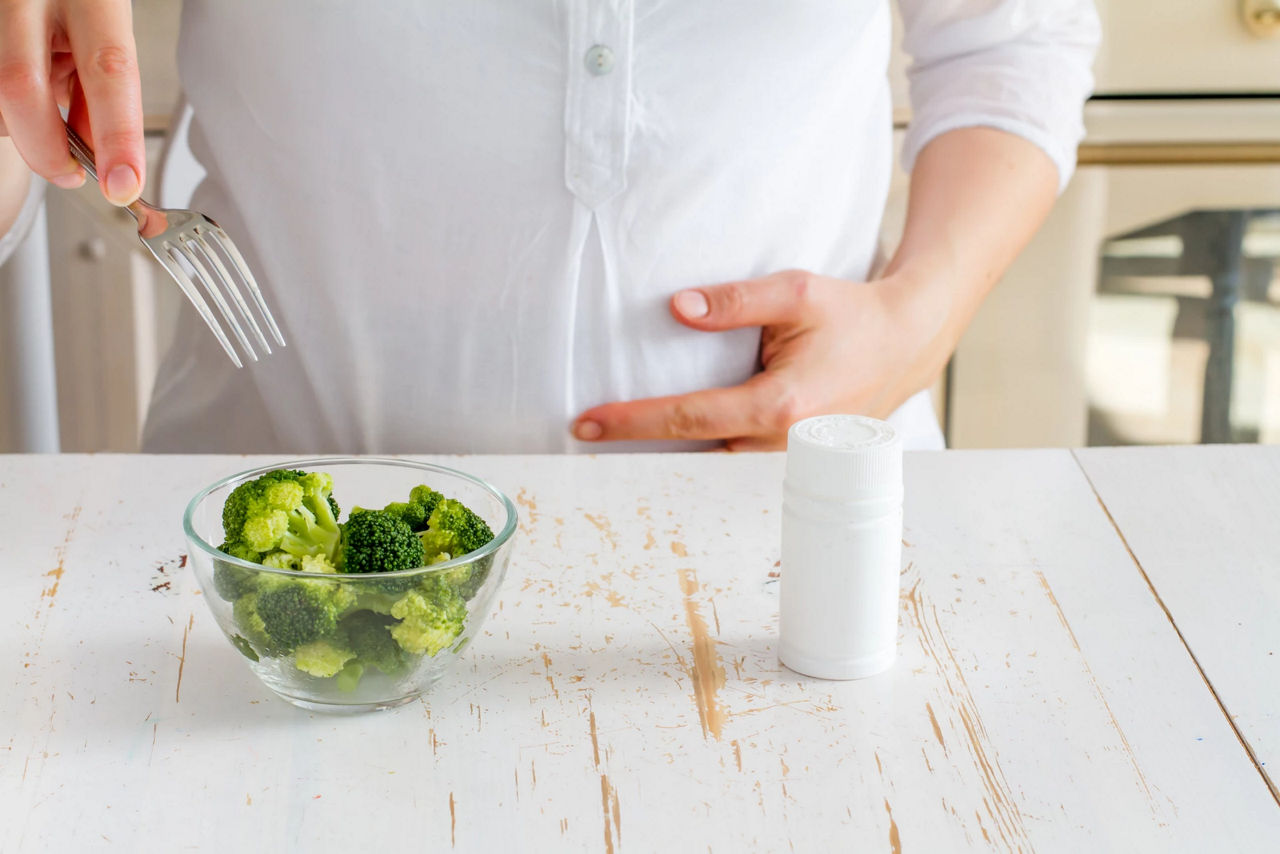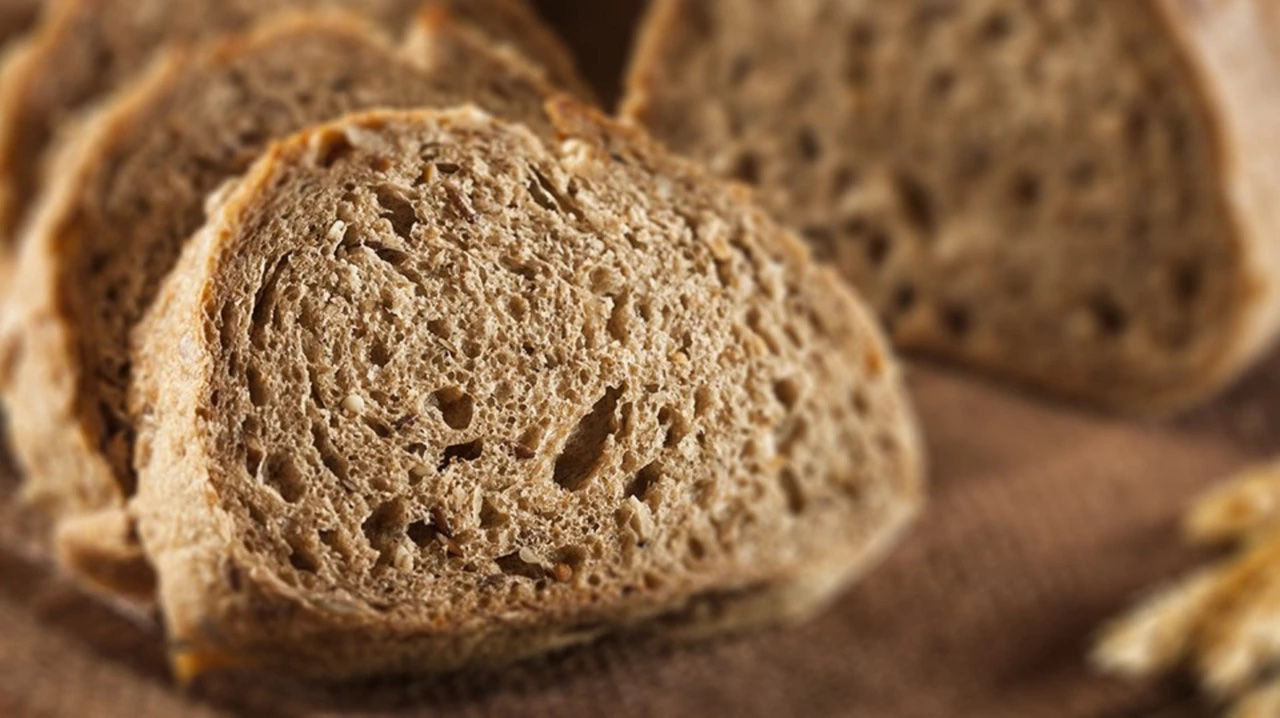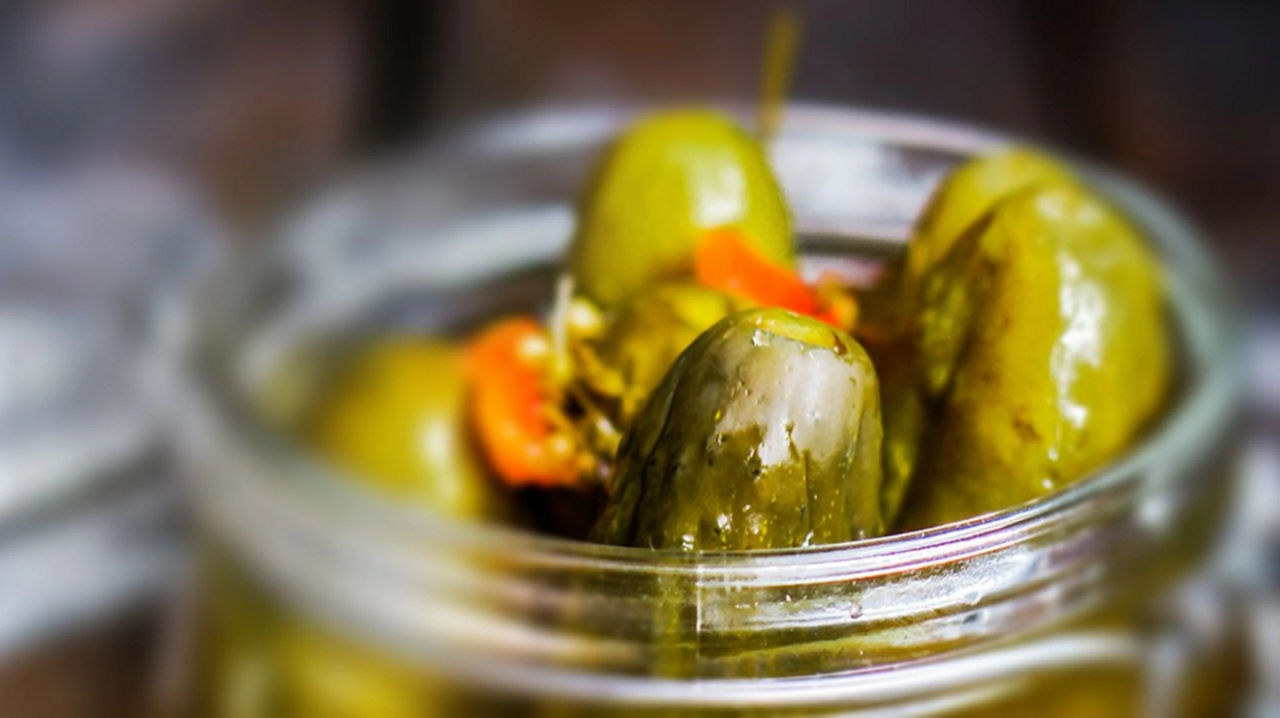Salt in pregnancy
Salt (also known as sodium chloride) is an everyday, essential mineral, and the main source of sodium in our diet. Some salt is essential for our overall health, as the body needs it to help it digest food. Salt also helps us to maintain the fluid levels in our body1, which is particularly important during pregnancy, when your fluid levels change to support your developing baby2.
But how much salt in pregnancy is just enough, and how much is too much? Read on to find out how much salt you should be consuming, why some women find themselves craving salt in pregnancy, and our top tips for reducing your sodium intake.
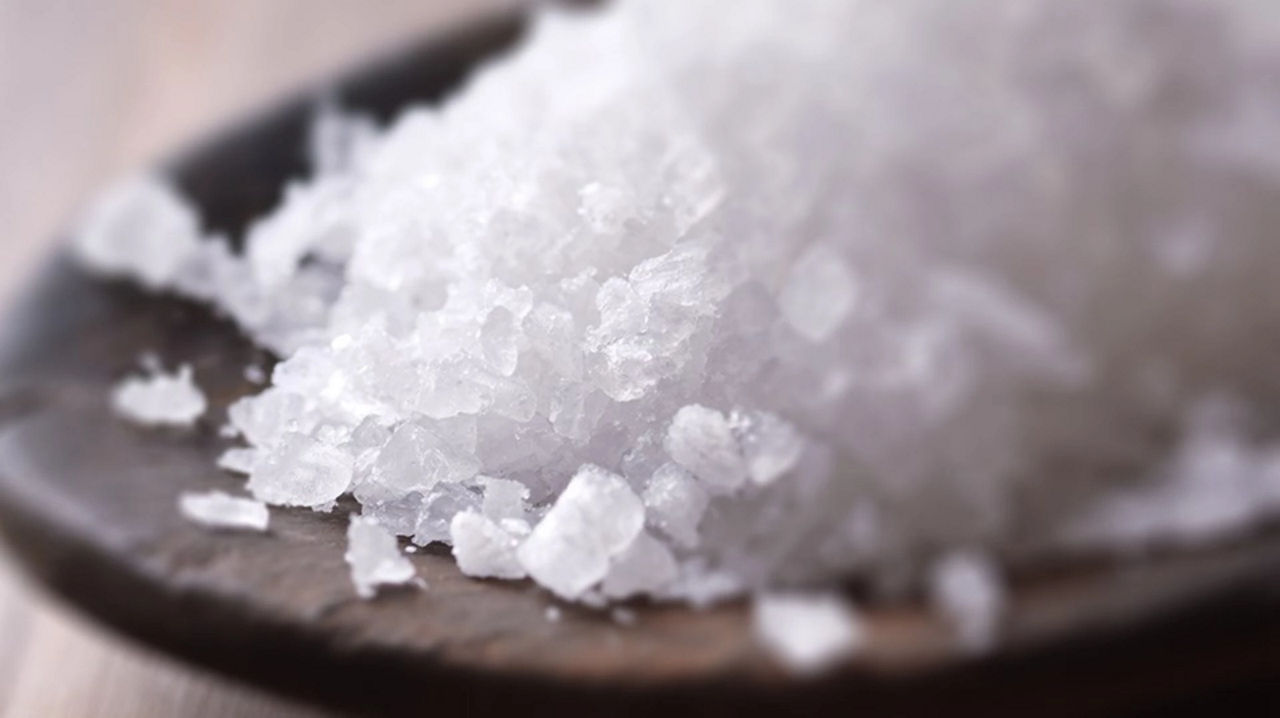
The difference between sodium and salt
Salt is made up of two substances, namely sodium and chloride, both of which are needed by the body3. Whilst the terms are often used interchangeably, they are in fact different things. Salt is a natural compound, whilst sodium is a mineral, and one of the chemical ingredients in salt4.
When trying to control or reduce your salt intake, it’s important to pay attention to the nutrition labels on the foods you buy. Some nutrition labels include the content of both salt and sodium, so that you can accurately see what your salt and sodium intake will be. Others however, only account for sodium. On foods where only the sodium content is listed, you’ll need to multiply this by 2.5 to work out how just how much salt the food contains5.
Iodised salt during pregnancy
Some salt is fortified with iodine, a mineral that’s very important for your health. Iodine isn’t made by the body, and so you’ll need to make sure that you’re getting enough as part of a healthy and balanced pregnancy diet.
Iodine is essential for your baby’s development in the womb, especially for their brain development6. Whilst research shows that some pregnant women aren’t getting enough of this essential nutrient, it’s not advisable to rely on iodised salt as a means of increasing your intake. That’s because current government guidelines state that the amount of salt that we consume should be reduced6.
As such, it’s best to explore the various food-based sources of iodine instead. These include6:
Some types of fish - including haddock and cod
Shellfish - like prawns and scampi
Dairy products such as cow’s milk and yoghurt
Eggs - you can learn more about eating eggs in pregnancy here
Bear in mind however that the amount of iodine contained in certain foods is difficult to measure, for a variety of reasons. For example, what farming methods are used, how much iodine is in the soil, and what season it is6.

Although it has a vital function, only a small amount of salt is needed for a healthy diet during your pregnancy, or at any other time7.
A healthy intake of salt during your pregnancy is the same as it would be normally. Adults need about 1g of salt per day for normal bodily function, and the NHS recommends a daily maximum intake of 6g, which is about a teaspoon or the equivalent to 2.4g of sodium1. This figure includes the salt that’s already been added to the food you’re eating, and any that’s added during cooking or at the table.
However, according to the British Health Foundation, it’s estimated that most people are eating too much salt, consuming nearer 8.4g8. If you suspect that you’re eating too much salt in pregnancy, it's a good idea to track your daily levels by checking nutrition labels for salt or sodium content.
It’s not unusual for people to unknowingly eat more than the recommended amount of salt, simply because it’s added to so many manufactured foods. According to the NHS, the everyday packaged foods we buy such as breakfast cereals, some meat products, ready meals, and even bread, contain about three quarters of the salt we consume1.
Eating too much salt in pregnancy (or at any other time) can have a number of negative effects on your health. For example1, 5:
High blood pressure (also known as hypertension) - this in turn increases your risk of a stroke, heart attack and cardiovascular disease
It can affect the kidneys causing water retention - this can in turn cause swollen ankles and a raise in blood pressure
An increase in your levels of thirst, causing you to take in too much fluid
What happens if we don’t get enough salt during pregnancy?
There’s a wealth of information out there around the dangers of eating of eating too much salt, but what about what happens when you don’t get enough?
Some studies have suggested that low sodium intake could be linked to a resistance to insulin, but it’s clear that further research is needed before any firm conclusion can be made here9. Low sodium intake can also lead to a condition known as hyponatraemia, which is often symptom-free, but in severe cases does require hospital treatment10.
Why do we crave salt during pregnancy?
There are a wide variety of foods (and even non-foods) that you might crave whilst you’re pregnant. If you find that yourself reaching for the savoury snacks, rest assured you’re not alone, as it’s not unusual for some women to find themselves craving salt during pregnancy.
There has been some research in this area, although there’s still a lot to learn. One study suggested that cravings for foods containing salt in pregnancy tended to be more prevalent during the third trimester11.
Whilst most are harmless, it’s important to keep an eye on your pregnancy cravings, as some may contain higher levels of salt than you think. For example, crisps, pickles or some processed meats. You can learn more about cravings in pregnancy here.
How to reduce your salt intake when you’re pregnant?
If you’re used to cooking with, and generally consuming, too much salt, a sudden low sodium intake can result in food feeling tasteless and bland. However, rest assured that this is not the case. Once you lower your sodium intake, your taste buds can adapt in around six weeks. As such, you may wish to reduce your intake gradually5.
There are some easy ways for you to lower your salt intake during your pregnancy. Get into the habit of checking the salt levels on pre-packaged food and aim for less than 1.5g of salt per 100g. the green, amber and red colour-coded labels on the front of packaged food can be very useful here – aim for green and amber where possible. In addition, try to opt for reduced salt options when buying things like baked beans, frozen pizza, ketchup and other condiments, or breakfast cereals.
Sausages, bacon and deli meats like ham can be high in salt, so try to eat these less often. Alternatively, enjoy fresh, unprocessed meat and poultry instead. Certain meats should be avoided during pregnancy, take a look here to learn more.
Other ways to reduce salt in pregnancy include1, 5:
Limiting your use of soy sauce, mustard, pickles, mayonnaise and other table sauces, as these can all be high in salt
Try to eat fresh foods where possible, rather than relying on processed and ready meals
When eating cheese, choose varieties that are lower in salt, for example mozzarella and cottage cheese
When buying tinned vegetables, opt for those tinned in water rather than brine
Instead of crisps, choosing unsalted nuts
And for a healthier snack, opt for fruit or vegetables like a handful of berries or some carrot sticks.
Foods that are low in salt for pregnant women
Some foods are naturally lower in salt than others, whilst others have reduced salt versions available. If you’re aiming to reduce the amount of salt you eat in pregnancy, opt for5:
Unprocessed fish, meat and poultry
Lentils, chickpeas and reduced salt baked beans
Lower salt cheeses, such as mozzarella, cream cheese or ricotta
Fresh eggs
Unsalted nuts
Homemade soup made with low sodium stock
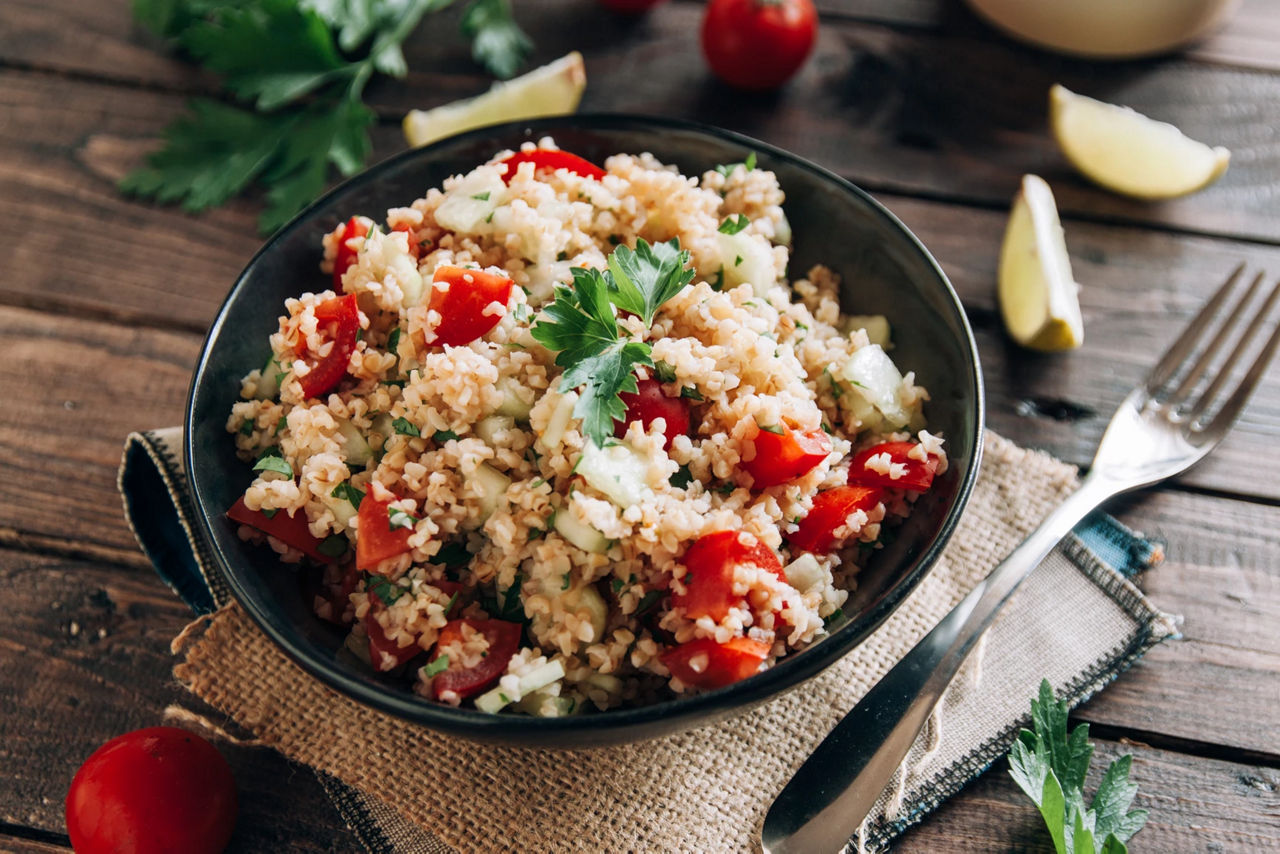
Tips for cooking with less salt
There are lots of ways to add flavour to your food whilst at the same time reducing your salt intake. For example, avoid adding salt to your food during cooking, as well as once it’s prepared. Give your meals a taste before seasoning it with salt, as it may not require the addition.
Other top tips include:
Seasoning your food with pepper (which works well with almost any dish), or fresh herbs and spices like garlic, chilli and ginger. These can all be added to pasta, vegetables and meat dishes. In addition, try a squeeze of fresh lime on stir fries
Baking or roasting vegetables instead of frying them. For example, red peppers, tomatoes, courgettes and fennel
Instead of using cubes or granules, make your own stock or gravy. Or shop for a reduced-salt variety
Tips for eating out
It can be harder to control your salt intake when you’re eating in a restaurant or fast-food outlet, or when you’re ordering a takeaway.
Here are some helpful tips for you to use to reduce your salt intake when you’re eating out:
If you’re ordering a pizza, choose vegetables or chicken as a topping instead of pepperoni, bacon or extra cheese
If it’s pasta on the menu, opt for those with tomato rather than cheese-based sauces
Instead of ordering fries on the side, choose a salad instead
If a curry or stir fry is the order of the day, opt for plain rice rather than pilau or egg fried rice as it’s lower in salt
When ordering a sandwich, skip the ham and the cheese and choose fillings like chicken, or vegetables like avocado or roasted peppers
When ordering a salad, ask for the dressing on the side as some sauces are high in both salt and fat
Related Topics
Read next

Need some help?
You can get quick answers to common questions in our FAQs.
Alternatively, if you need help with general pregnancy or baby advice, or maybe on using or ordering our products - our expert team are always on hand to talk about feeding your baby.
NHS. Salt in your diet [online] 2023. Available at https://www.nhs.uk/live-well/eat-well/food-types/salt-in-your-diet/. [Accessed November 2023]
Soma-Pillay P, Nelson-Piercy C, Tolppanen H, Mebazaa A. Physiological changes in pregnancy. Cardiovasc J Afr. 2016 Mar-Apr;27(2):89-94. doi: 10.5830/CVJA-2016-021. PMID: 27213856; PMCID: PMC4928162
NHS. Others - vitamins and minerals [online] 2020. Available at https://www.nhs.uk/conditions/vitamins-and-minerals/others/. [Accessed November 2023]
U.S Food and Drug Administration. Sodium in Your Diet [online] 2022. Available at https://www.fda.gov/food/nutrition-education-resources-materials/sodium-your-diet#:~:text=The%20words%20%E2%80%9Ctable%20salt%E2%80%9D%20and,chemical%20elements%20found%20in%20salt. [Accessed November 2023]
NHS The Leeds Teaching Hospitals. Salt - A guide on lowering your salt intake [online] 2021. [Accessed November 2023]
The Association of UK Dieticians. Iodine [online] 2022. Available at https://www.bda.uk.com/resource/iodine.html. [Accessed November 2023]
- British Heart Foundation. Could extra salt in the diet help to prevent pre-eclampsia? [online] 2015. Available at https://www.bhf.org.uk/research-projects/a-new-approach-to-an-old-problem-the-roles-of-aldosterone-and-salt-in-normal-pregnancy-and-preeclampsia. [Accessed November 2023]
British Heart Foundation. We're all eating too much salt - here's why that matters [online] 2022. Available at https://www.bhf.org.uk/what-we-do/news-from-the-bhf/news-archive/2022/march/why-matters-eat-too-much-salt. [Accessed November 2023]
Oh H, Lee HY, Jun DW, Lee SM. Low Salt Diet and Insulin Resistance. Clin Nutr Res. 2016 Jan;5(1):1-6. doi: 10.7762/cnr.2016.5.1.1. Epub 2016 Jan 29. PMID: 26839871; PMCID: PMC4731857
National Institute for Health Care and Excellence. Hyponatraemia [online] 2020. Available at https://cks.nice.org.uk/topics/hyponatraemia/. [Accessed November 2023]
Orloff NC, Hormes JM. Pickles and ice cream! Food cravings in pregnancy: hypotheses, preliminary evidence, and directions for future research. Front Psychol. 2014 Sep 23;5:1076. doi: 10.3389/fpsyg.2014.01076. PMID: 25295023; PMCID: PMC4172095
Last reviewed: December 2023
Reviewed by Nutricia’s Medical and Scientific Affairs Team

